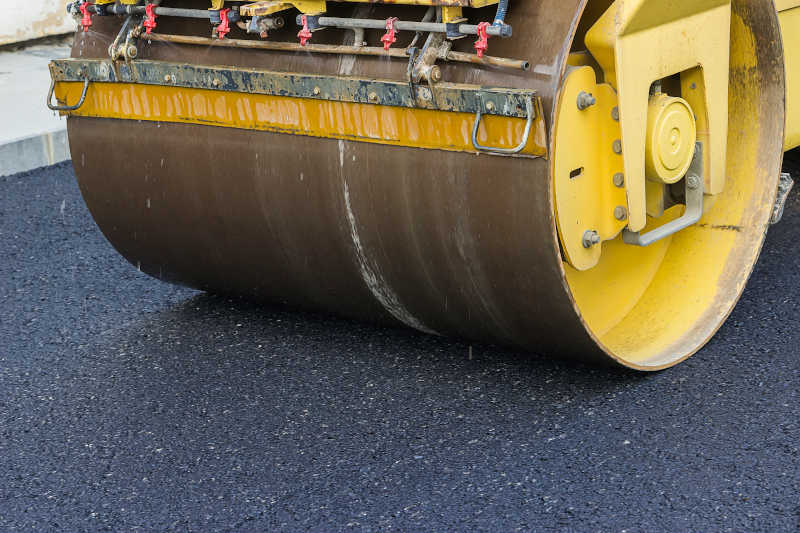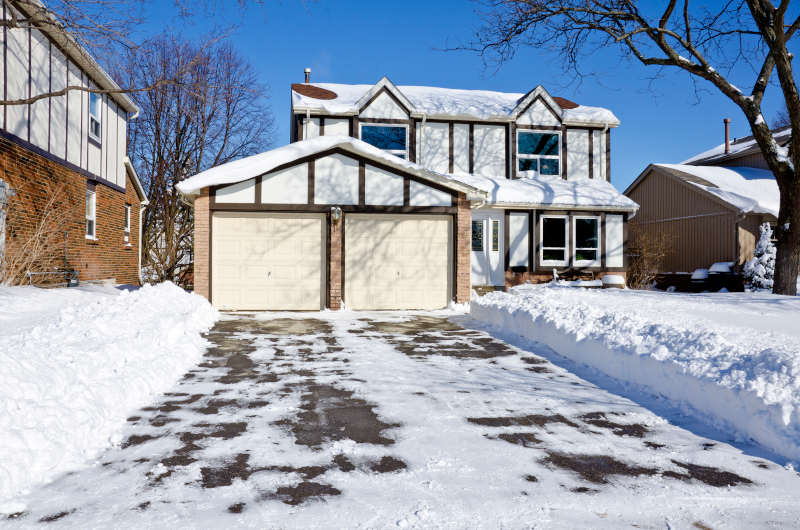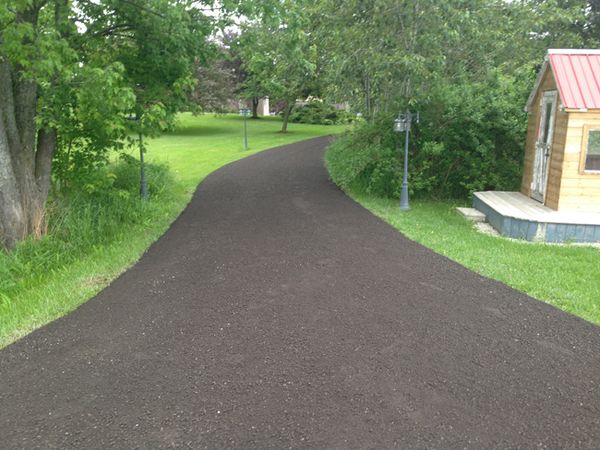Colorado Springs, CO
Mon-Fri: 8am – 6pm
Colorado Springs, CO
Mon-Fri: 8am – 6pm

7 min
Asphalt is one of the most ubiquitous construction materials, yet also one of the most misunderstood. From driveways to roads and runways, asphalt paves our world – but there are many pervasive myths about everything from its durability to its environmental impact.
This blog post will debunk some of the most common asphalt myths. You may be surprised that much conventional wisdom about this commonplace material is inaccurate. We will examine the realities around asphalt longevity, lifecycle costs, contribution to pollution, and more. Once the asphalt myths are busted, you will have a clearer picture of the pros and cons of this versatile substance.
Contrary to common misconceptions, asphalt paving stacks up quite favorably regarding environmental friendliness. One of the most significant environmental benefits of asphalt is its 100% recyclable. This means that when asphalt pavement reaches the end of its life, it can be removed, reprocessed, and used again in new pavement mixtures. This cycle can be repeated over and over, reducing the demand for new raw materials and minimizing waste.
Along the lines of myth one, another misconception often arises: asphalt cannot be recycled, which is far from the truth. Contrary to popular belief, asphalt is among the most recycled materials worldwide. The recycling process involves milling the existing surface, which is then transported to a facility where it is crushed, screened, and stored. This reclaimed asphalt pavement (RAP) is used as a substantial component in new asphalt production, contributing significantly to cost savings and sustainability.
Infrastructure professionals have long recognized the benefits of recycling asphalt, not only because of its cost efficiency but also due to its environmental benefits. The use of RAP reduces the need for virgin aggregates and bitumen, thus minimizing the impact on natural resources. Additionally, the asphalt recycling process lowers greenhouse gas emissions compared to the production of new asphalt.
People believe that asphalt lacks durability, a misperception that needs addressing. In truth, asphalt is an incredibly durable material. With regular maintenance and proper installation, asphalt pavement can last 20 to 30 years, demonstrating its resilience and longevity.
One of the critical aspects of asphalt’s durability is its ability to withstand various elements, including heavy traffic and adverse weather conditions. Asphalt’s inherent flexibility allows it to adapt to ground movements and temperature fluctuations without cracking or sustaining significant damage. This elasticity aids in extending the pavement’s lifespan while also reducing maintenance requirements.
When properly installed, asphalt can indeed bear heavy loads with relative ease. The key is the thickness of the asphalt layer, which should be engineered considering the expected traffic load.
The load-bearing capacity of asphalt also depends on the quality of the underlying base and subgrade. A solid foundation is essential to distribute the load evenly across the pavement, preventing stress points that could lead to premature failure.
Asphalt’s capacity to handle heavy loads is evident in its widespread use in highways, airports, and trucking terminals. These are high-traffic areas where the pavement is subject to constant heavy loads. With appropriate design, installation, and maintenance, asphalt is a robust and reliable solution for heavy-duty applications.
Contrary to the prevalent misconception, asphalt is not exclusively used for roads; its application extends to many constructions, including driveways, parking lots, and walkways. It is the preferred material for these applications due to its durability, cost-effectiveness, and ease of installation.
Beyond these commonplace uses, asphalt finds application in other areas as well. For instance, it is used to create golf cart paths, airport runways, and tennis courts.
One common misconception is that asphalt is an expensive material. However, when one considers the overall cost-effectiveness, longevity, and low maintenance requirements of asphalt, it becomes evident that this belief is unfounded.
Compared to other materials, such as concrete, asphalt is significantly less expensive to install. The initial installation cost of asphalt is lower, and the long-term maintenance costs are also more affordable.
Maintaining asphalt pavement is easier than many think. Unlike the common myth, keeping up asphalt is straightforward, simple, and affordable. This easy maintenance is a key reason asphalt is attractive for residential and commercial projects.
Asphalt pavement requires routine inspections to identify any signs of wear or damage. If detected early, minor issues such as small cracks or holes can be easily repaired using simple asphalt patching techniques. Moreover, regular driveway sealcoating, approximately every two to three years, can significantly enhance the lifespan and appearance of the asphalt surface. This process involves applying a protective layer to prevent UV rays, water, and vehicle fluids damage.
Addressing the common misconception, it is essential to note that asphalt maintenance is not as costly as often perceived. In fact, it is quite the opposite. The cost-effectiveness of maintaining asphalt surfaces is one of the many reasons property owners favor it.
Compared to other materials, such as concrete, the cost of maintaining asphalt is significantly lower. Routine maintenance tasks, such as crack filling and commercial sealcoating, are affordable and crucial in prolonging the life of the asphalt surface. These preventive measures can help avoid substantial repairs or a complete replacement in the future, thus saving money in the long run.
Contrary to popular belief, repairing asphalt is not difficult, provided the correct methods and materials are used. Asphalt repair mainly involves addressing potholes and cracks.
Pothole repair typically involves cleaning the hole, applying a tack coat, filling the hole with an asphalt mix, and then compacting the filled area. For crack repair, the crack is first cleaned then filled with a hot or cold applied crack filler. A sealant is finally laid to ensure moisture resistance.
Moving on to the tenth myth, many believe that asphalt cannot be laid over concrete, which is a misconception. The process of laying asphalt over concrete is not only possible but is also a common practice in commercial paving. In fact, if you look at I-25 by the Air Force Academy, you be driving on asphalt that was laid on top of concrete. Known as an overlay, this technique allows rejuvenating an old concrete surface without the costly and time-consuming process of complete replacement.
The secret to a successful asphalt overlay lies in preparing the concrete surface. It must be thoroughly cleaned and any major cracks or joints should be filled with a flexible sealant. A tack coat of asphalt is applied to the concrete before the asphalt overlay is laid to ensure proper bonding.
A significant number of people believe that the production of asphalt is highly energy-intensive, but this is not necessarily the case. Innovations in the asphalt industry have led to the development of energy-efficient manufacturing processes that significantly reduce the energy consumption involved in asphalt production.
Modern asphalt plants are designed to reuse the heat typically lost during production, thus saving energy. Additionally, the rise of warm-mix asphalt technologies has reduced energy needs by lowering the temperatures at which the material is mixed and placed on the road. These lower temperatures, in turn, reduce the overall energy consumption and associated emissions.
Moreover, the recyclability of asphalt also contributes to its energy efficiency. Recycled asphalt requires less energy to process than virgin asphalt materials. In fact, asphalt is the most recycled material in the United States, with a recycling rate of over 99%.
Conclusion
In conclusion, the numerous misconceptions surrounding asphalt often cloud its true nature. This robust, versatile material offers significant environmental benefits, including recyclability and lower energy production.
It boasts great durability, load-bearing capacity, and aesthetic appeal, making it suitable for various construction applications beyond roads.
Moreover, asphalt’s longevity and performance can be significantly enhanced with professional installation and maintenance.
Therefore, a comprehensive understanding of asphalt’s characteristics can lead to more effective, sustainable, and cost-effective construction practices.

7 min

9 min